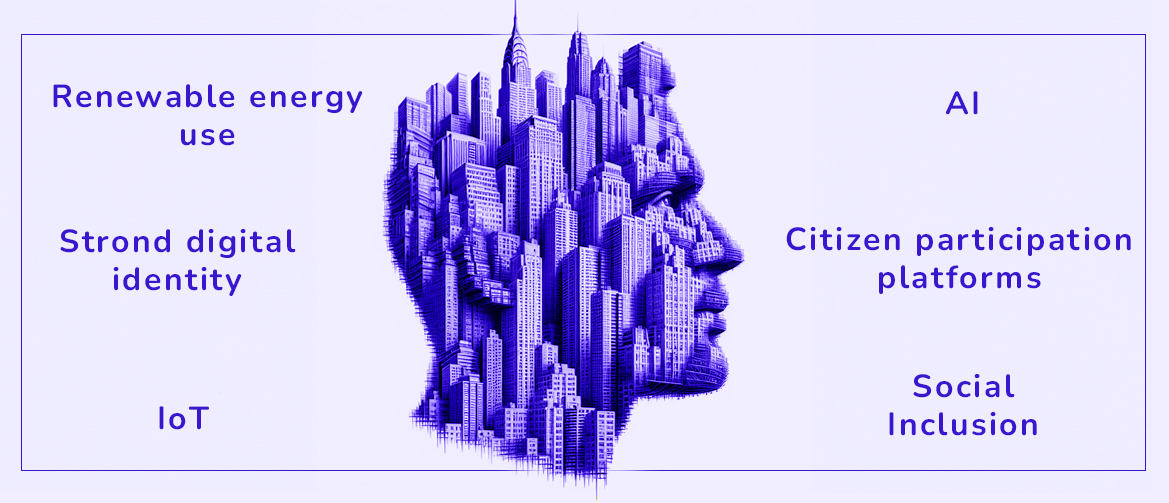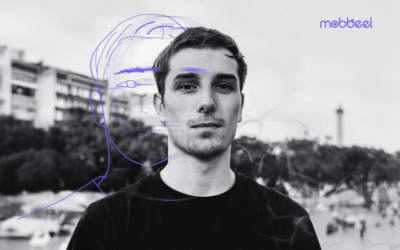Efficiency in city management is a priority in modern cities. Crowded streets, long queues at access points and traffic congestion are just some of the challenges facing growing urban centres. Nevertheless, thanks to advances in technology, we are witnessing a revolution that promises to transform the metropolitan experience and stands as a combination of digital identity, biometrics and Smart City.
A strong digital identity and the implementation of biometrics in the Smart City environment are key to improving citizens’ interactions with public institutions and the private sector. These technologies ensure high levels of security, accessibility, and efficiency in accessing a variety of metropolitan services.
Smart City: promoting citizen interaction through digital identity
Implementing a strong digital identity provides multiple advantages for citizens, local businesses and public administrations alike.
By adopting solutions that enable quick, real-time biometric authentication, we would allow citizens to access a wide range of services, from leading business transactions to using public transport, in a very simple and intuitive way.
Fostering citizen participation in smart cities with biometrics
In addition to improving the user experience, digital identity is also key to promoting eDemocracy.The ability to vote remotely through biometric ID verification and facial recognition offers accessibility and security to electoral processes.
An outstanding example of this application is the use of our technology in the presidential elections in El Salvador. Our technology enabled the secure and agile identification of Salvadorans registered abroad who were able to vote.

This innovative project, a world pioneer, has promoted significant participation and transparency in the public sector.
Biometrics improves flow and queue management
Biometrics also plays a crucial role in access control and passenger flow management, reducing queues and increasing security.
For example, at Mobbeel, we have collaborated on projects where facial recognition is used in fast check-in processes to control flow in public transport, minimising queues and improving the user experience in places such as airports, train and bus stations.
In parallel, smart mobility, which integrates interconnected public transport systems and shared mobility options, provides flexible and sustainable solutions for urban travel, improving transport efficiency and reducing congestion in cities.
Furthermore, these technologies simplify payments and transactions, promoting the adoption of secure payment methods.
Biometrics: boosting sustainable development and inclusion
The adoption of biometric technologies also contributes to the sustainability of smart cities by reducing the need for physical travel and minimising the associated carbon footprint.
At the same time, enhancing the virtual delivery of face-to-face activities fosters operational efficiency and promotes the responsible use of urban resources, thus optimising the city’s management.
Furthermore, it is essential to ensure the inclusion of all segments of the population in access to these technological advances. In this sense, we develop solutions that are accessible and easy to use for people of all ages and abilities.
The above is achieved by eliminating the need to remember passwords while offering an intuitive user experience and usability. This makes technology particularly suitable for older people.
In addition, voice user authentication offers an ideal alternative for users who may have difficulties with tactile or visual interaction.
Privacy challenges in future smart cities
As smart cities expand, so do security and privacy challenges. The proliferation of biometric data and the implementation of AI systems raise logical concerns about potential vulnerabilities and abuses that may violate the privacy of individuals within a Smart City.
Recently, the European Union approved the world’s first Artificial Intelligence law. This law seeks to prevent abuses in the use of these technologies that undermine human rights, with special emphasis on personal data.
Indiscriminate, real-time facial recognition through video surveillance cameras in public spaces is strictly forbidden, with few exceptions where the safety of individuals is paramount.
In addition, companies and public administrations must adopt appropriate measures to protect the privacy of citizens and guarantee the integrity of digital identity systems, aspects included in the GDPR.
Our solutions include advanced encryption and authentication measures to protect biometric data and ensure system reliability at all times. Furthermore, we work closely with regulators and supervisory bodies to ensure compliance with current regulations and promote best practices in the use of biometric technologies.
How do we predict the Smart City in 10 years? What does the future hold?
Our vision for the smart city in the near future is a citizen-centric approach, prioritising quality of life, community participation, and environmental sustainability.
Firstly, the smart cities of the future will be fully interconnected, leveraging emerging technologies such as the Internet of Things (IoT) and artificial intelligence (AI) to optimise resource and service management. This will enable better efficiency in areas such as public transport, energy management, and waste collection, helping to reduce pollution and improve the urban environment.
Furthermore, citizen participation platforms will play a key role in local decision-making. Citizens will have the opportunity to actively contribute to the planning and development of their communities by participating in debates, surveys and online voting. Strong digital identity will be a fundamental requirement to ensure the security and integrity of these participatory processes, as well as to facilitate the delivery of customised services and citizen information management.

In terms of sustainability, smart cities of the future will be characterised by a commitment to renewable energy use and a reduced carbon footprint. The implementation of smart infrastructures, such as efficient lighting and transport systems, will contribute to climate change mitigation and improved air quality. In addition, the adoption of sustainable practices in areas such as urban agriculture, water management and electric mobility will be encouraged, promoting a healthier and more environmentally friendly lifestyle.
Ultimately, the smart cities of the future will be places where technology is used as a tool to improve the lives of citizens and promote social inclusion. By ensuring equitable access to digital services and encouraging the active participation of all segments of the population, they will build more resilient and cohesive communities capable of meeting the challenges of the 21st century with determination and creativity.
Innovation and commitment to the future
At Mobbeel, we are committed to driving innovation in the field of digital identity and biometrics and contributing to the development of more inclusive, sustainable and connected smart cities. Through our dedication to research and development, as well as our collaboration with strategic partners and customers around the world, we aspire to remain a leader in the digital transformation of societies and to create a future where technology catalyzes human and social progress.
Contact us if you want to learn more about how to make citizens’ lives easier with biometrics and digital identity in the Smart City.

I’m a Software Engineer with a passion for Marketing, Communication, and helping companies expand internationally—areas I’m currently focused on as CMO at Mobbeel. I’m a mix of many things, some good, some not so much… perfectly imperfect.

PRODUCT BROCHURE
Discover our identity verification solution
Verify your customers’ identities in seconds through ID document scanning and validation, and facial biometric matching with liveness detection.




